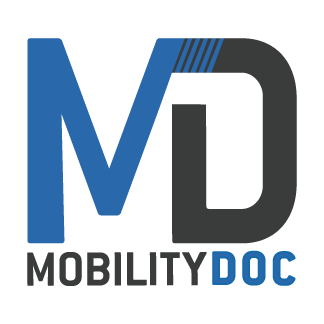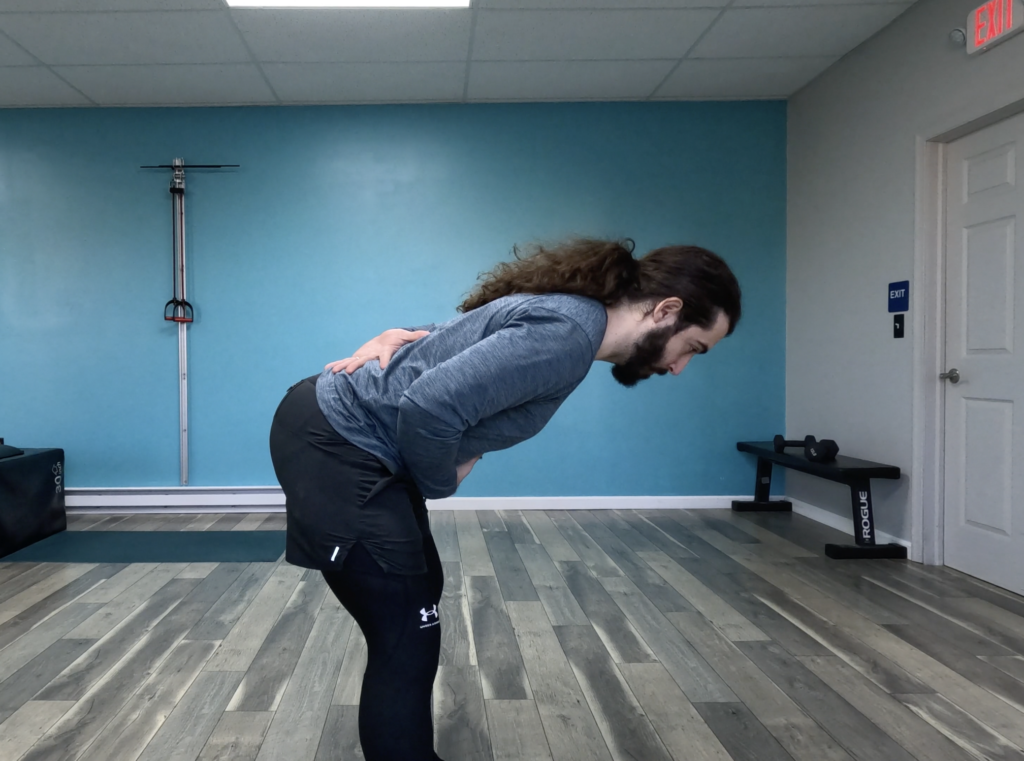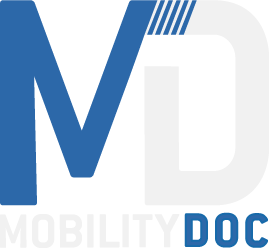Have you experienced pain after bending forward? Even rounding your back for long periods of time due to work like gardening, working at a table that isn’t quite the right height, or moving boxes can cause strain. We have a natural tendency for our backs to move with our hips instead of independently from them. This moving together, among other things, opens up the world of back pain. This week we are going over 3 simple tips to help prevent this kind of issue and stop the pain before it starts. Before getting into that, let’s talk about reasons why this movement can hurt in the first place.
Why Does Bending Forward Hurt My Back?
There are a few different reasons why bending forward causes back pain. Improper body mechanics while bending over like rounding or arching, flexibility issues, and muscle weakness. Losing range of motion in your hips leads to both improper body mechanics and muscle weakness. This is because if you’re not moving the body part correctly your muscles aren’t working correctly either. All three aspects of this are intertwined. You almost can’t have one without the others. Like a domino effect, you need to have all 3 parts to be pain free and most importantly stay pain free.
How To Avoid Back Pain While Bending Forward
Now that we understand why the pain happens, let’s go over 3 simple ways to avoid back pain while bending forward.
1 - Keep A Neutral Spine While Bending Forward
The biggest thing people do that triggers pain while bending forward is rounding or arching their back. When we bend over we want to keep our spine totally neutral. That means no overarching and no rounding forward. This is true for the entire spine. There are many different combinations of rounding or arching your spine that can cause strain.
Here are a few examples of ways you can round or arch your back improperly:
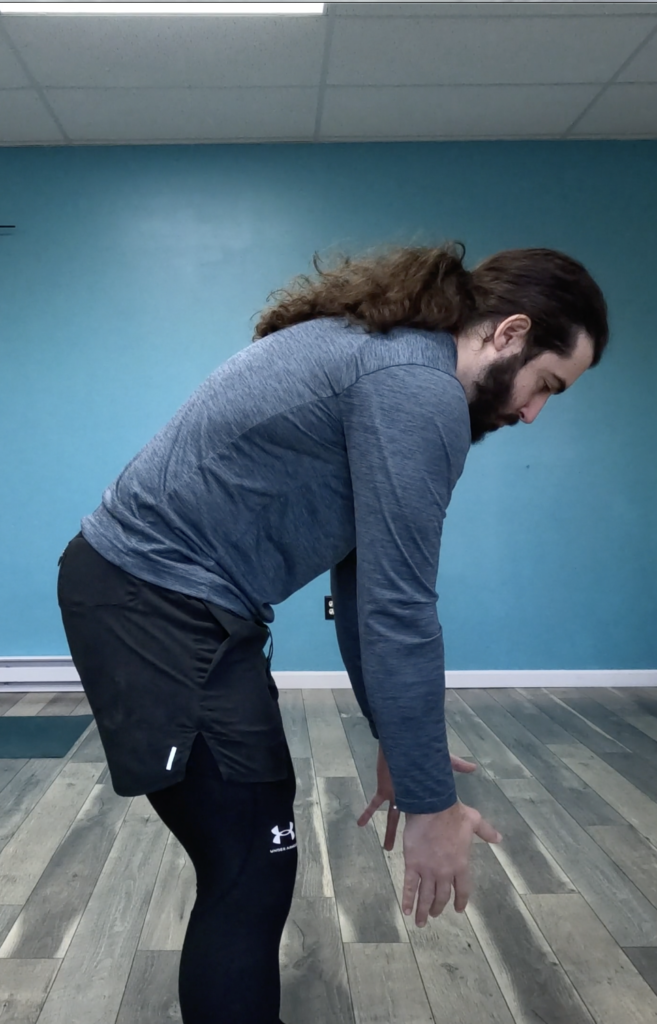
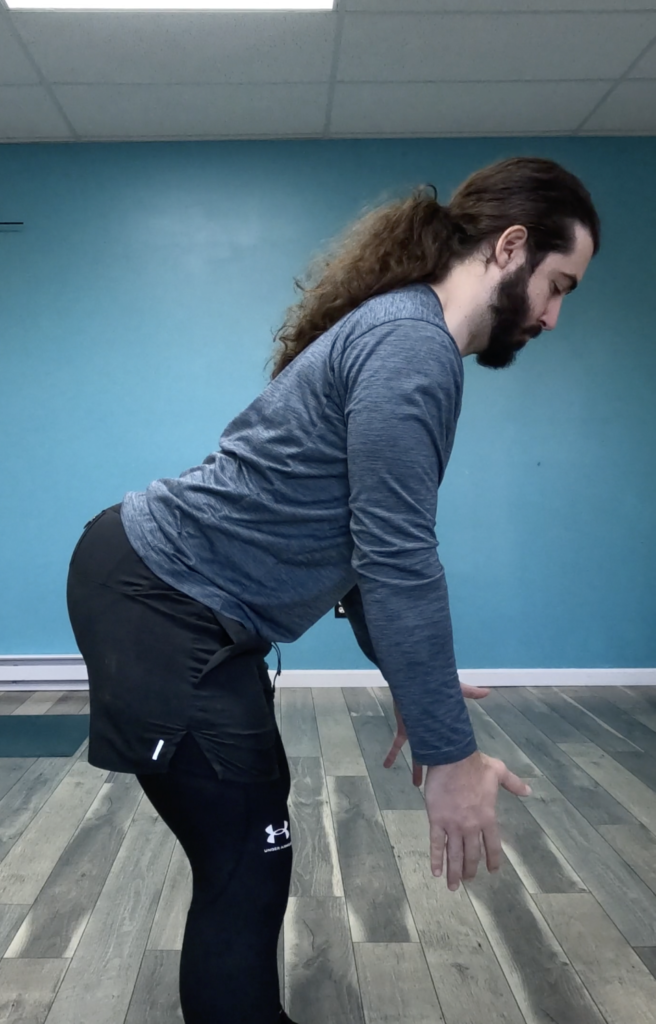
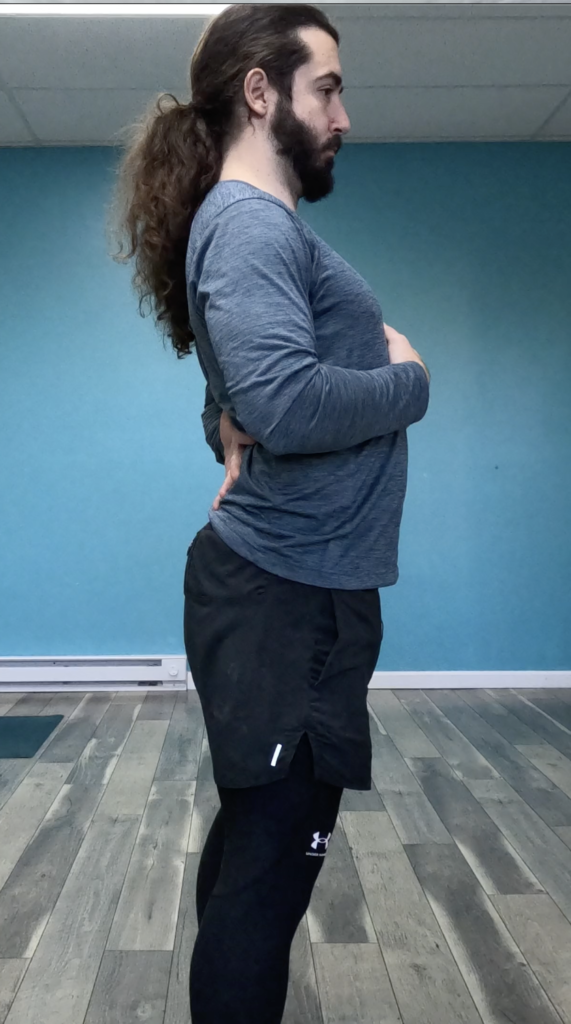
2 - Don’t Leave Your Trunk Behind
In our society we are always in a hurry. We look for the quickest way to get things done. When it comes to bending and lifting at an angle that can be problematic. Twisting while bending down is another big cause of issues in your back. Especially when you’re lifting something heavy. In a previous blog, we covered shoveling do’s and don’ts. The principles are pretty similar. Don’t leave your trunk behind! If you need to twist to pick something up, make sure you turn your trunk first and then bend over. What that means is that you should rotate your entire upper body from the hips. That way your spine can continue to stay neutral and not at an angle. This stops the action from being 2 in one to being 2 separate movements. This will help prevent issues and will have you in a better position to bend, reach, or pick something up.
3 - Hinge At Your Hips
Probably the most important aspect of avoiding pain in your back is hinging at your hips. In order to keep our spines neutral while bending over, you need to isolate this movement. If you’re not sure exactly what that is, it means that your hips push back to allow your body to come forward. This movement is independent of your back meaning that you don’t need to do both at the same time.
The next time you bend forward, try to feel if you’re moving your back together as one with your hips or if they’re moving independently.
Still Having Issues?
You may already be familiar with these principles and still have difficulty moving your hips back independently and have pain. If that sounds like you, don’t despair! There are two ways to work on improving your discomfort and better your movement patterns.
The first is to stretch your hips. Tightness in your hips directly relates to how your pelvis is sitting. The way your pelvis sits directly impacts your back! If your pelvis is being pulled forward or backwards your low back will also be pulled in one direction or the other. Make sure you’re stretching your glutes, hip flexors, and even your hamstrings to keep your pelvis in a good position. This shouldn’t be too much of a surprise because we talked about the third and most important part of bending forward pain free is the fact that the movement is a hip hinge!
Show your glutes some love with this Glute Recovery Video:
Second, we want to strengthen our lower back and core. Engaging these muscles correctly will teach your spine to stay in the right position. It is very important that when training this area of the body we practice keeping the spine in the correct position. That means if you’re working on abs you don’t want to flatten your spine all the way to the floor. That takes the natural curve out of your back that we are trying to reinforce and support. If you’re finding exercises too difficult and end up overarching your back, try doing a modification of the exercise until you’re strong enough to do the exercise with your spine in the proper position. For quick tips about this, check out this video!
Practical Appplications
This information can be applied to height discrepancies from a few inches to bending all the way down to the floor. So often this kind of pain comes from not being mindful of our movement. Stay vigilant and move well so you can move often!
Don’t miss out! We just started a new cycle of our MDFit Program! That means new exercises, new strength training, and bettering yourself though physical therapy based fitness. Whether you’re looking to boost your essential foundation, want a HIIT work out, or like barbell work, there is a program for everyone! Go to TrainHeroic.com to see all the online programs we offer! Join our Online Fitness Community by signing up for a free week trial today!
